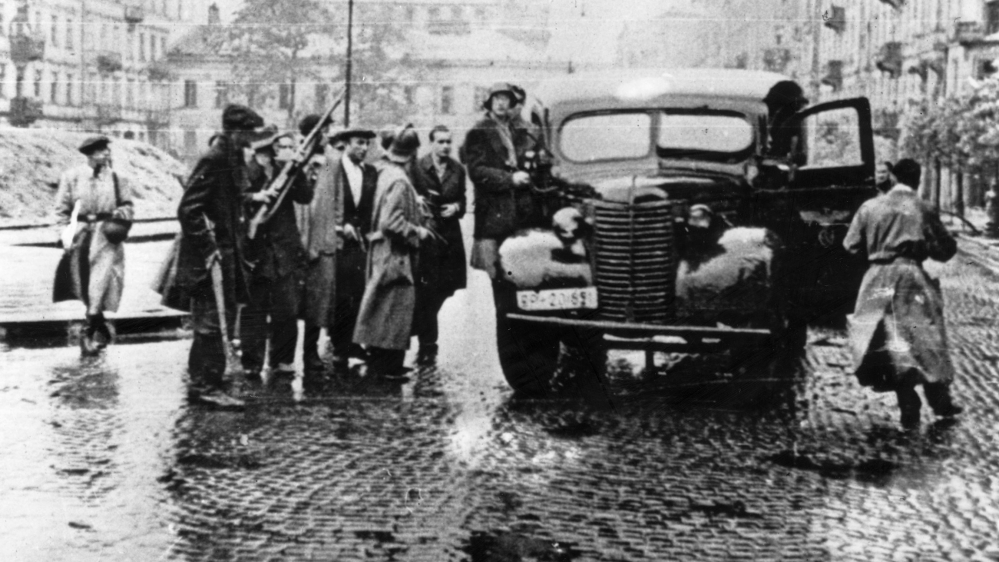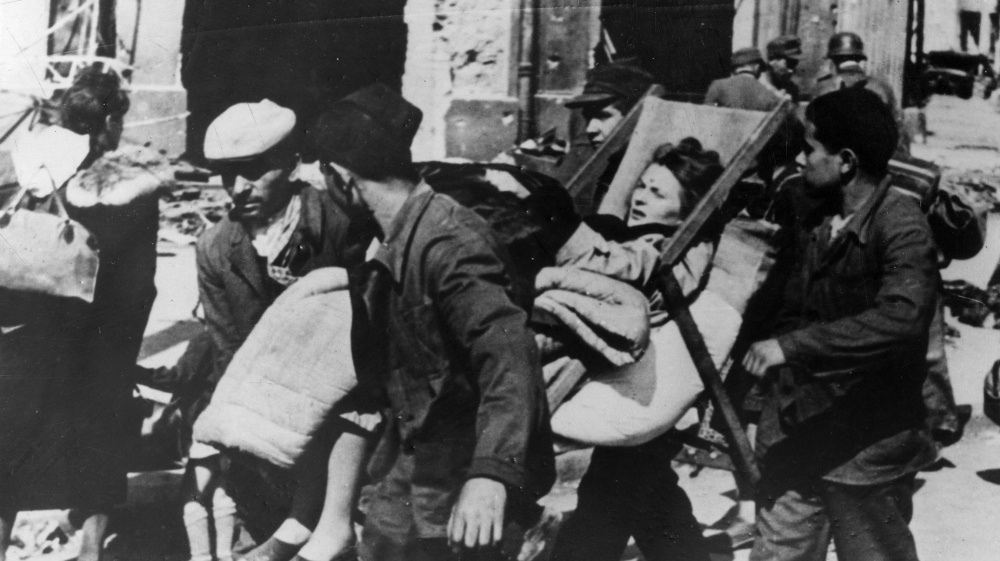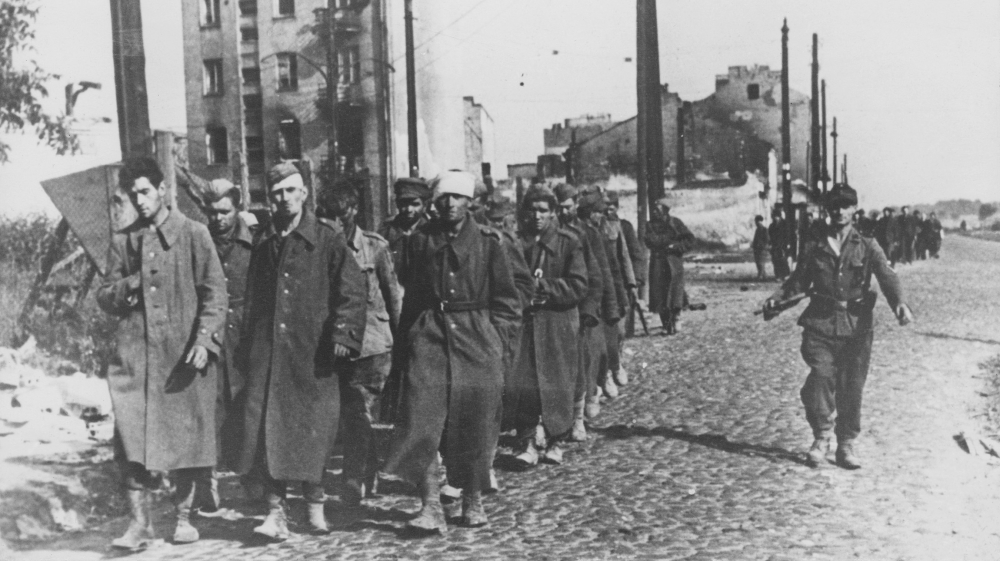As the clock strikes five on Thursday, Warsaw will come to a sudden halt.
Cars will stop, pedestrians will freeze. For one minute of stillness, sirens will blare across the city. Red and white smoke will be sent above crowds.
This annual moment of silence is how Poles commemorate the Warsaw Uprising of 1944, the largest military operation by a resistance movement in Europe during the second world war.
By 1944, years of German occupation had left the Polish capital suffering from food shortages, roundups to labour camps and the systematic persecution of Jews – which came to a head in the Warsaw Ghetto Uprising of April 1943, leaving 63,000 dead.
As the Red Army advanced from the East, Poles were afraid that the Germans would demolish the capital and turn it into a front-line fortress.
At five o’clock on August 1, the Uprising broke out.
In the first few days the Home Army troops, the armed wing of the underground Polish state, took control of some quarters of the city. Patriotic elation briefly flooded the streets: Polish flags appeared in windows, loudspeakers played prewar songs.
A month later ammunition ran low and fighters began to retreat from the city centre. Allied supplies sent by airdrop mostly failed to reach the uprising.
The Germans took back the city district by district, killing swaths of civilians in reprisal. By October 2, the uprising had failed.
The struggle claimed the lives of some 18,000 insurgents and over 150,000 total.
Remaining Varsovians, residents of Warsaw, were marched out of the capital as it was plundered.
When they returned, the Warsaw they knew had ceased to exist: 80 percent of buildings had been razed to the ground.
“After the war, it was rebuilt, but this was another Warsaw,” said Pawel Ukielski, deputy director of the Warsaw Rising Museum.
The uprising was a turning point in Polish history.
It marked the final two months of the interwar Polish state.
Some have argued that its spirit may have been a motivating factor for the later Solidarity movement, which toppled the socialist regime in 1989. Debates are still waged about the timing and leadership of the rising, given its ultimate human cost.
Under the socialist leadership, all memory of the Warsaw Uprising was buried.
But since commemorations took off in the past three decades, monuments have peppered the capital.
All battalions who took part now have a street, square or statue decked with their name.
Some monuments are particularly poignant, such as the statue of a little boy in an adult helmet, in memory of the children who served in the uprising.
Another forceful reminder of the scale of the event, the Warsaw Uprising Mound, a 121-metre hill towering over a panorama of the Mokotow district, was built entirely of the rubble from the destroyed city.
“There is much more public engagement now. [Until 1989] few spoke about the uprising – all memory of it was kept down, several insurgents had been arrested, and many others had already passed away,” said Leszek Zukowski, president of the World Association of Home Army Soldiers.
Zukowski fought in the uprising as a 15-year-old.
Today, he makes sure to wear a Home Army pin in his jacket and a symbol used by the underground state – an abbreviation of “Fighting Poland” in the shape of an anchor – stitched on his tie.
The treatment of insurgents has also changed. Four charities assist former fighters in their daily chores, such as attending doctor’s appointments and grocery shopping.
The mayor’s office distributes annual cash rewards, and this year will also reimburse the trip for those fighters wishing to attend events in the capital. In the week leading up to the celebrations, 14 restaurants in central Warsaw offer free meals to former fighters.
Honouring the combatants
Annual celebrations on August 1 span the entire city, as battalions are saluted in their respective districts. Candles and flowers heap up on pavements under commemorative plaques.
“My battalion had over 1,500 men during the uprising. Only three of us are still living. When there were still several more of us … we would lay flowers in places where the largest numbers of our friends had perished. That is how we used to honour the dead,” said Zukowski.
Every year, there is an official ceremony outside parliament, followed by a ceremony for insurgents and their families at the main Military Cemetery. In the evening a bonfire is lit on the Warsaw Uprising Mound, which burns for 63 days, marking the length of the struggle.
Over the years, former fighters have been eager to share their experiences.
“Marking the day is a reminder for the younger generations that freedom has to be fought for,” said Zukowski.
Yet still-living fighters are now over 90 years old.
“The 75th anniversary is probably the last one when they can still participate in the commemorative events.”
To Ukielski, this is one of the last moments when “they can pass on their values as part of a generational relay.”
As the next generation picks up the baton, commemorative events are evolving.
For the sixth year running, 750 people raced to the top of the “PAST” building, a key vantage point which was captured by fighters during the uprising.
On August 1, a flotilla of decorated vessels will sail down the Vistula river through central Warsaw.
In the evening, an estimated 30,000 Poles will gather at Pilsudski Square to sing upbeat patriotic anthems forbidden during the German occupation, which have regained nostalgic sparkle. People should be made aware of the fact that a city of almost one million people was nearly obliterated from the face of the earth.
The military scale, casualties and destruction following the Warsaw Uprising still come to some as a shock.
Former mayor of Warsaw, Hanna Gronkiewicz-Waltz, said that when Boris Johnson, then-mayor of London, attended the 2014 commemorations, he mistook “50,000 casualties in the Wola district” as a glitch in translation. He assumed the interpreter had meant 5,000.
On July 25, an exhibition about the Warsaw Uprising was opened at the Topography of Terror Museum in Berlin.
According to Andreas Nachama, director of the museum, it speaks to the horrors of World War II.
“People should be made aware of the fact that a city of almost one million people was nearly obliterated from the face of the earth.”
Source: Al Jazeera News


























